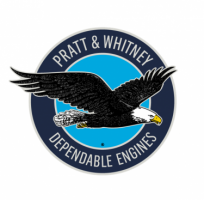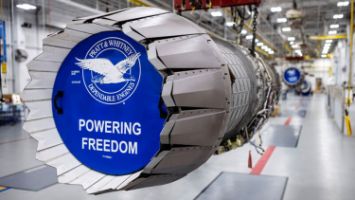Pratt & Whitney Continues Adaptive Engine Breakthroughs with Latest Tests
EAST HARTFORD, Conn., Sept. 18, 2017 /PRNewswire/ -- Pratt & Whitney, a division of United Technologies Corp. (NYSE: UTX), today announced it has successfully completed testing of an adaptive three-stream fan in an engine with an F135 core as part of the U.S. Air Force Research Laboratory's Adaptive Engine Technology Development (AETD) program. Successful testing of the three-stream engine architecture demonstrates Pratt & Whitney is well positioned to transition adaptive engine technology to meet future U.S. Air Force requirements for combat aircraft propulsion.
"Preliminary data from the test indicates our three-stream fan has met or exceeded expectations with respect to performance as well as the integrity of the turbofan machinery and fan module," said Matthew Bromberg, president, Pratt & Whitney Military Engines. "This is an important milestone on the path toward the advancement and maturation of a next generation adaptive engine which will enable the warfighter to stay well ahead of future and emerging threats."
Modern military turbofan engines have two airstreams - one that passes through the core of the engine, and another that bypasses the core. The development of a third stream provides an extra source of air flow to improve propulsive efficiency and lower fuel burn, or to deliver additional air flow through the core for higher thrust and cooling air. Utilizing a third stream of air that can be modulated to adapt the engine's performance across the flight envelope means a fighter can have the best of both worlds by accessing an on-demand increase in thrust or smoothly shift to highly efficient operations during cruise. This capability provides an optimal balance for combat scenarios requiring both high-end acceleration and increased range.
The adaptive three-stream fan technology leverages and improves upon Pratt & Whitney's experience as the only provider of fifth generation fighter engines - the F119 and F135, which power the F-22 Raptor and F-35 Lightning II, respectively.
While Pratt & Whitney is demonstrating the efficacy of a three-stream architecture under AETD, it is also maturing other advanced propulsion technologies considered essential for high-speed and long-endurance performance requirements. This includes adaptive control systems as well as improved integrated power and thermal management capacity which can enable more sensors, data fusion, electronic warfare, and directed energy. The goal of the AETD program is to provide a 25 percent reduction in fuel consumption and a 10 percent improvement in thrust levels compared to today's fifth-generation combat aircraft engines.
"From the development of the very first adaptive engine, the J58, which powered the iconic SR-71 Blackbird, to today's F135 STOVL variant, our decades of experience with adaptive engine technology are unmatched," said Bromberg. "We look forward to continuing work with our Air Force customer to advance the next generation of military fighter engine technology under the final phase of AETD, and beyond through the Adaptive Engine Transition Program (AETP)."
The AETD fan test was conducted at the Arnold Engineering Development Complex, located on Arnold Air Force Base in Tullahoma, Tenn. Later this year, Pratt & Whitney plans to conduct additional adaptive engine testing on a new high efficiency engine core developed under the AETD program.
Watch this video to learn more about Pratt & Whitney's unrivaled experience with adaptive engines.
About Pratt & Whitney
Pratt & Whitney is a world leader in the design, manufacture and service of aircraft engines and auxiliary power units. United Technologies Corp., based in Farmington, Connecticut, provides high-technology systems and services to the building and aerospace industries. To learn more about UTC, visit its website at www.utc.com, or follow the company on Twitter: @UTC.
For more information about Pratt & Whitney, visit http://www.pratt-whitney.com.
This press release contains forward-looking statements concerning future business opportunities. Actual results may differ materially from those projected as a result of certain risks and uncertainties, including but not limited to changes in levels of demand in the aerospace industry, in levels of air travel, and in the number of aircraft to be built; challenges in the design, development, production support, performance and realization of the anticipated benefits of advanced technologies; as well as other risks and uncertainties, including but not limited to those detailed from time to time in United Technologies Corp.'s Securities and Exchange Commission filings.
Pratt & Whitney
+1 (860) 565-9600
media@pw.utc.com
View original content with multimedia:http://www.prnewswire.com/news-releases/pratt--whitney-continues-adaptive-engine-breakthroughs-with-latest-tests-300520985.html
SOURCE Pratt & Whitney







